Samsung Electronics Co SP10WL User Manual Taurus Windows XP English
Samsung Electronics Co Ltd Taurus Windows XP English
Contents
Users Manual part 7 per CRN 23252

68 Users Manual
Troubleshooting
Complete the following in the order presented until your system is functioning
properly. If all of the steps below fail then contact your local reseller for assistance.
Questions and Answers
Please see “Questions and Answers” on page 69 for assistance in correcting any
computer operational problems.
Check the Connections
Verify all of the power and peripheral cables are securely plugged into their sockets
and that your system and power supply is on.
Norton AntiVirus
Run Norton AntiVirus to insure a virus is not affecting your computer.
To run Norton AntiVirus proceed as follows:
Click Start > Programs > Norton AntiVirus > Norton AntiVirus 2002
Windows Help and Support
Run Windows Help and Support to find problem that may be affecting your
computer.
To run Windows Help and Support proceed as follows:
Click Start > Help
Reinstalling Software
If for some reason your system crashes you may corrupt your HDD, Windows
Operating system and/or some of your device drivers. If this is the case, use System
Recovery CD to reinstall OS and System Software CD to reinstall the corrupt device
drivers.
System Recovery Precaution:
Before you start restoring your windows operating system insure you backup
all data on your hard drive.
Samsung is NOT responsible for any data loss.
Taurus (Windows XP) - English.fm Page 68 Tuesday, April 2, 2002 4:13 PM
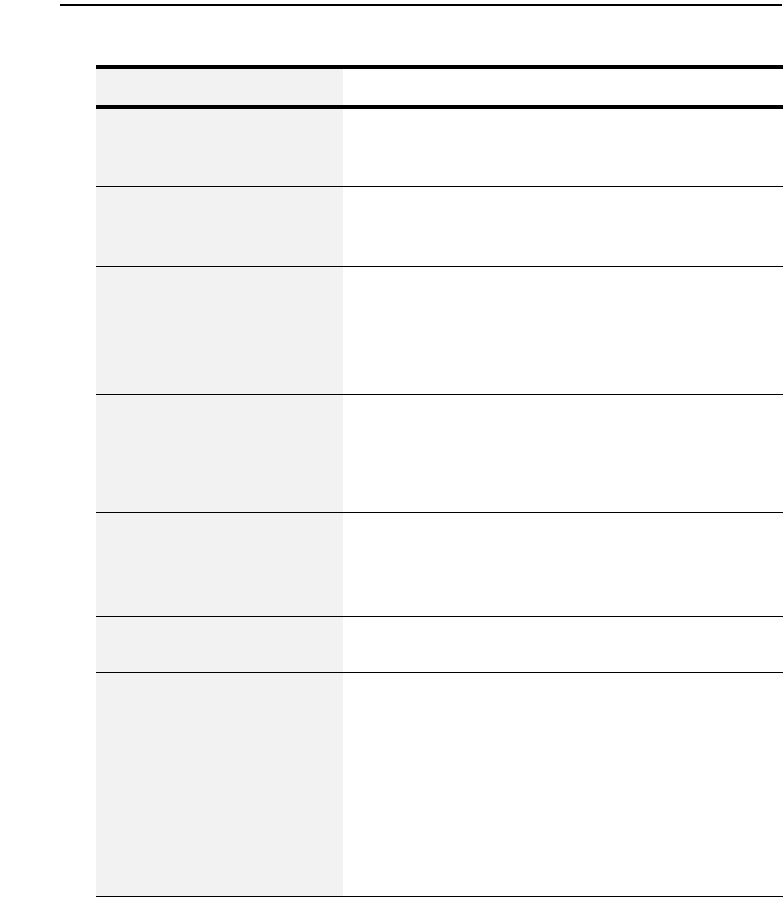
Troubleshooting 69
Questions and Answers
Operating System Problems
Problem Action
The computer does nothing
when you turn it on.
Has the battery run down? Connect the power cord
to the computer and recharge the battery. Try turning
on the computer again.
Some of the letter keys type
numbers instead of the
indicated letters.
Is the Num Lock light on? If so, the numeric keypad
on the keyboard is active. To return the keypad keys
to typing letters, press <Num Lock>.
Battery power seems to run
out faster than expected.
If you are running the computer from the battery
rather than the power cord, make sure that you set
the Idle Mode field in System Setup to On. This
setting enables the microprocessor and the hard
drive to slow down when the computer is not busy.
Certain software programs
“hang” during operations
when there is no interaction
with the keyboard or
peripheral devices.
Your computer may be in Suspend or Rest mode.
Tap the touchpad to resume from Suspend or press
the power button to resume from rest.
PC Card does not work
correctly.
Make sure that the PC Card is inserted left side up in
the PC Card slot. Check that the card is inserted fully
into the slot. If you are using a PC Card modem,
check the modem cable connections.
Your ATA or Compact
Flashcard do not work.
A patch is provided for these cards on the Recovery
CD
The System Setup settings
are not retained when you
turn off the computer.
The CMOS battery inside the computer may need to
be replaced. The CMOS battery provides power to
save the system BIOS information when the
computer is turned off. Normally, the CMOS battery
lasts for several years. Do not attempt to open the
chassis and replace this battery yourself or your
warranty is void. Have an authorized the
manufacturer’s service center replace the CMOS
battery.
Taurus (Windows XP) - English.fm Page 69 Tuesday, April 2, 2002 4:13 PM

70 Users Manual
No sound. Verify if the mute check box is checked or the
volume is not turned down in the pop up menu by
clicking the speaker icon of the task bar.
System/BIOS behaves
erratically
If you caused an abnormal power interruption (i.e..
removing battery while on battery power), you may
cause BIOS data corruption.
Problem Action
Taurus (Windows XP) - English.fm Page 70 Tuesday, April 2, 2002 4:13 PM
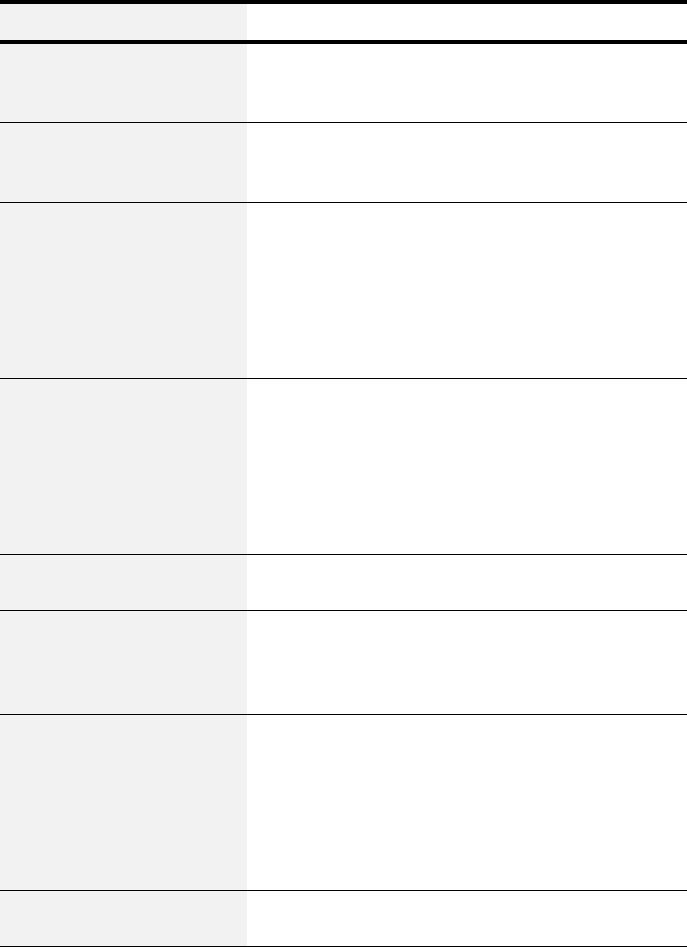
Troubleshooting 71
Video Problems
Problem Action
Nothing appears on the LCD
panel when you turn on the
computer.
Adjust the brightness on a TFT LCD. Are you using
an external monitor? If so, press <Fn+F4> to return
to the LCD panel.
Error Message when
entering Power Management
while in Multimonitor mode.
If the secondary monitor is set to 256 colours, this
error message could appear. Change the colour of
the secondary monitor to ‘high colour (16 bit)’.
Nothing appears on the
external monitor when you
switch the display to it.
Is the monitor properly connected to the computer?
Is the monitor’s power cord connected to an AC wall
outlet? Check the brightness and contrast controls on
the monitor. Does the program appear on the LCD
panel instead of the external monitor? If so, press
<Fn+F4> to switch to the monitor. Try turning the
monitor off and on again.
Only the LCD Display works
when system returns from
Power management mode
while in Multimonitor mode.
The system resets to the original BIOS setup when
the system returns from the power management
mode. If the Display mode, in the Advanced menu of
BIOS setup is set to LCD, then only the LCD will be
turned on when the system wakes up. Set the Display
mode in the BIOS to Both to turn on the LCD &
CRT on wakeup.
The external monitor
displays flashes or waves.
Check the cables between the monitor and the
computer. Are they properly installed?
Cannot toggle between CRT
and LCD while playing the
3D game.
If you are using the Multimonitor mode, you can not
use the <Fn+F4> key combination and also you
cannot use this function in 3D games using
Direct-X.
There is LCD or CRT has
noise (speckles, lines or
raged edges) on the
picture when playing a
MPEG file with the Media
player/ DVD software or
using the USB camera.
Adjust the resolution and the colour to 1400 x 1050
and 32 bit to display clearly, or avoid playing two
programs at the same time.
In DOS mode the CRT/LCD
button does not work.
The LCD only mode is not supported using this Key
combination.
Taurus (Windows XP) - English.fm Page 71 Tuesday, April 2, 2002 4:13 PM
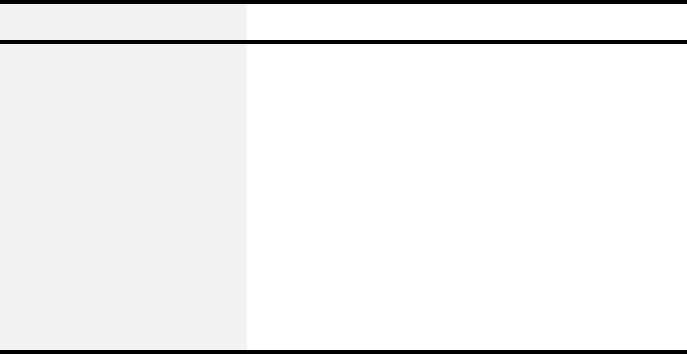
72 Users Manual
If the connected CRT
monitor display is not steady.
If the refresh rate is not optimal for the connected
CRT, then this problem may occur.
To correct this problem do the following:
1.Click Start > Settings > Control Panel.
2.Double-click the Display icon to open the Display
properties.
3.Select Settings
4.Click the Advanced button.
5.Click the Adapter tab
6.Adjust the Refresh rate to optimal or other selections
until you see the CRT clearly.
Problem Action
Taurus (Windows XP) - English.fm Page 72 Tuesday, April 2, 2002 4:13 PM
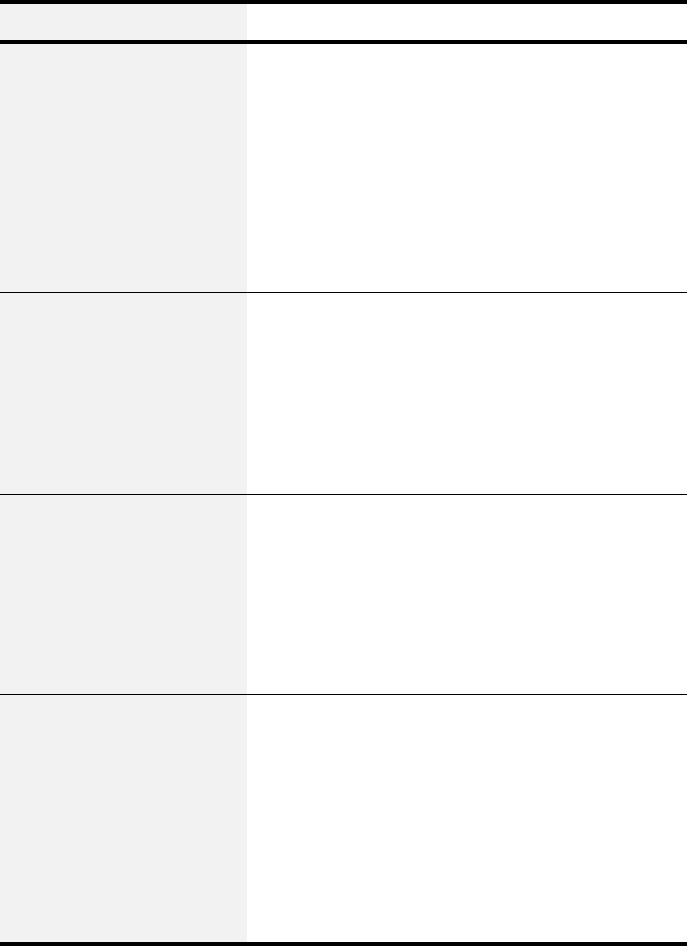
Troubleshooting 73
Modem Problems
Problem Action
My modem doesn't connect
to services or disconnects
during communication
If your modem has difficulty in connecting to on-
line services and sustaining communications, first
check if other devices are connected and remove
them. Also remove any extension leads. Interference
from certain devices or poor line power conditions
may degrade the quality of your connection. Under
these conditions gradually reduce the
communication speed of your modem until a reliable
connection is achieved.
Check with your on-line service provider.
When using a PBX phone
system I can't dial on my
modem.
If you use a PBX phone system you may need to
press a number i.e. '9' to connect to an external line,
you should enter the following command before
trying the connection and check modem
initialization. (ATX3&W)
And add “9,” as the external line prefix (example) of
the phone number when using the dial command
“ATDT9, 123-4567”.
Screen displays random or
garbage characters during
communications.
After your modem has connected to the on-line
service, your screen may display garbage characters
or after-images in screen transitions. This problem is
caused by a mismatch of the terminal modes
between communications service and
communications programs. You need to match the
terminal modes to each other. Refer to the user's
guide of the communications program you're using.
Reports error message that
insufficient Hard Disk space
is available.
Delete the unnecessary messages or data you
received by Modem or Fax every one to three
months as required.
If you're using the internet, many picture and data
files can get downloaded to your HARD DISK every
time you visit a home page, which will consume a lot
of your HARD DISK space. For more detailed
information about the method of deleting, refer to
the help of the Web browser you've been using or
your user's guide.
Taurus (Windows XP) - English.fm Page 73 Tuesday, April 2, 2002 4:13 PM

74 Users Manual
FAX Problems:
Depending on telephone line status, or types of Fax machines/programs that
send/receive the Fax, Fax transmission/reception may not work correctly. In
that case, please try other Fax programs. (e.g. Win Fax)
Reinstalling Software
Windows Application/Driver (Re)Installation
If you wish to reinstall drivers or applications, please use the Software CD.
If you wish to reinstall the Windows operating system, please use the Recovery CD.
Application/Driver (Re)Installation
Simply install the driver(s) according to the instructions below:
1. Insert the System Software CD-ROM.
2. Follow the directions provided in the opening window.
Windows (Re)Installation
To reinstall the your Microsoft Windows XP Operating System:
1. Start your computer.
2. Open the CD Drawer and insert the Recovery CD. Close the drawer.
3. When the Recovery Menu appears, select the option as required to restore your
system. You have two options for system recovery. The Standard Installation and
the User Installation.
•The Standard Installation Option will SAVE all user data files on your hard
disk and restore your operating system to normal.
•The User Installation Option will DESTROY all data on your hard disk. If
you have any data files or other software you do not wish to lose, make a
backup of these files to a diskette or other medium using a backup utility
before proceeding.
Samsung is NOT responsible for any data loss.
You MUST, however reinstall all of your applications and drivers using the
Software CD and other application software as required.
Taurus (Windows XP) - English.fm Page 74 Tuesday, April 2, 2002 4:13 PM

Troubleshooting 75
If the Recovery Menu does not appear, proceed as follows:
1. Restart your computer
2. Open the CD Drawer and insert the Recovery CD. Close the drawer.
3. You will see a message “Press any key to boot from the CD”, press any
key.
4. You will be presented with the User Installation Option.
If your computer cannot boot from the CD, change the boot priority to the
CD-ROM device as described in this manual.
Taurus (Windows XP) - English.fm Page 75 Tuesday, April 2, 2002 4:13 PM
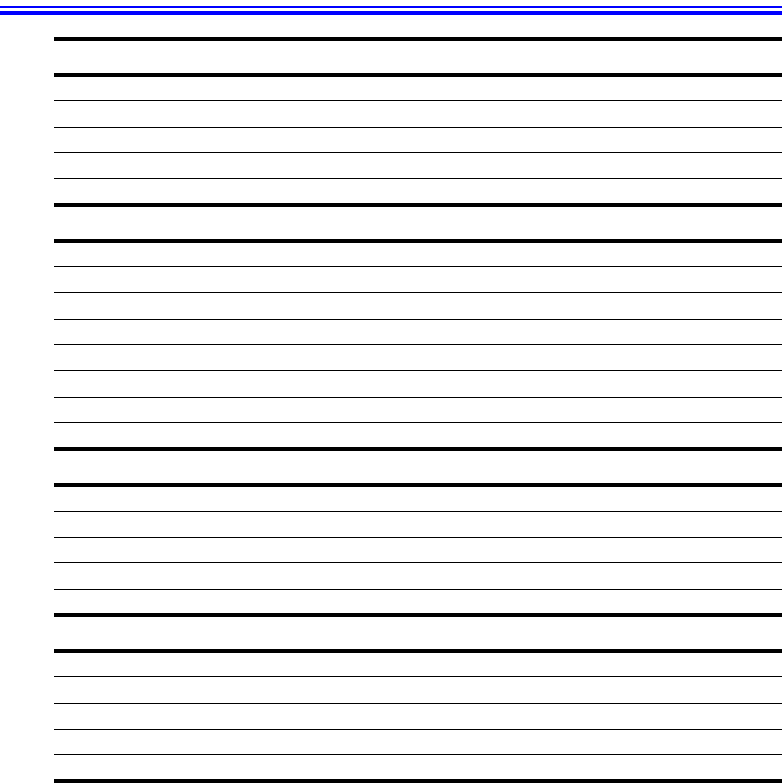
76 Users Manual
Specifications
Dimension
LCD viewing area (14.1” TFT) 285.6 x 214.3 mm
Width 32.0 cm
Depth 26.5 cm
Height 2.95 cm
Weight (CD Drive, Li-Ion battery & 14.1” TFT LCD) 2400 g
Environment
Ambient temperature, operating 5o–35oC
Ambient temperature, storage -32o–60o C
Relative humidity (noncondensing), operating 30–80%
Relative humidity (noncondensing), storage 95%
Altitude, operating 0 to 4,572 m
Altitude, storage 0 to 13,716 m
Shock, operating 122 G for 2 ms half sine
Shock, nonoperating 163 G for 2 ms half sine
Lithium-Ion Smart Battery
Normal Weight 435g
Nominal open circuit voltage 14.8 VDC
Capacity, typical 4400 mAhr, 65.0whr
Charging time, approximate, with computer turned off, typical 3.0 hr
Charging time, approximate, with computer turned on , typical 6.0 hr
External AC Adapter
Operating voltage 100-240 VAC
Line frequency 50-60 Hz
Input current 1.5 A 100 V ~ 0.8 A 240 V
Output current 4.2 A
Output voltage 19.0 VDC
Taurus (Windows XP) - English.fm Page 76 Tuesday, April 2, 2002 4:13 PM

Abbreviations 77
Abbreviations
A . . . . . . . . . Amperes
AC . . . . . . . . Alternating current
ACPI . . . . . . Advanced Configuration and Power management Interface
APM . . . . . . Advanced Power Management
ATA. . . . . . . AT attachment (refers to the hard-drive interface in an AT-
compatible computer)
ATAPI. . . . . AT attachment packet interface
BBS . . . . . . . Bulletin board system
BIOS . . . . . . Basic input/output system
C . . . . . . . . . Centigrade
CD . . . . . . . . Compact disc
CD-ROM . . Compact disc read-only memory
cm . . . . . . . . Centimeters
COM . . . . . . Communication (as in communication port)
CMOS . . . . . Complementary metal-oxide semiconductor
DC . . . . . . . . Direct current
DMA . . . . . . Direct memory access
DPMS . . . . . Display power-management signaling
DRAM. . . . . Dynamic random access memory
DSTN . . . . . Double layer super twist nematic
ECP . . . . . . . Extended capabilities port
EPP . . . . . . . Enhanced parallel port
g. . . . . . . . . . gram
G . . . . . . . . . Gravity
GB . . . . . . . . Gigabytes
hr . . . . . . . . . hour
Hz . . . . . . . . Hertz
IDE . . . . . . . Integrated drive electronics
I/O . . . . . . . . Input/output
IRQ . . . . . . . Interrupt request line
Taurus (Windows XP) - English.fm Page 77 Tuesday, April 2, 2002 4:13 PM
78 Users Manual
ISA . . . . . . . Industry Standard Architecture
KB . . . . . . . . Kilobytes
kg . . . . . . . . . Kilograms
LAN. . . . . . . Local-area network
lb.. . . . . . . . . Pounds
LBA . . . . . . . Logical block addressing
LCD. . . . . . . Liquid-crystal display
m . . . . . . . . . Meters
mA. . . . . . . . Milliampere
mAhr. . . . . . Milliampere hour
MB. . . . . . . . Megabyte
mm . . . . . . . millimeter
MPEG . . . . . Motion Picture Experts Group
MPU . . . . . . Microprocessor unit
ms . . . . . . . . Millisecond
PDF . . . . . . . Portable document format
PC . . . . . . . . Personal computer
PCI . . . . . . . Peripheral component interconnect
PCMCIA. . . Personal Computer Memory Card International Association
POST. . . . . . Power-on self-test
PNP . . . . . . . Plug and play
PS/2 . . . . . . . Personal System/2
RAM . . . . . . Random-access memory
ROM . . . . . . Read-only memory
SVGA . . . . . Super video graphics array
TFT . . . . . . . Thin-film transistor
USB . . . . . . . Universal serial bus
V . . . . . . . . . Volt
VAC . . . . . . Voltage alternating current
VCC . . . . . . Voltage collector current
VDC . . . . . . Voltage direct current
whr . . . . . . . Watt hour
Taurus (Windows XP) - English.fm Page 78 Tuesday, April 2, 2002 4:13 PM

Glossary 79
Glossary
AC adapter
The AC (or alternating current) adapter regulates current coming into your
computer from the wall outlet. The current at the wall outlet is alternating current
and needs to be changed by the adapter to DC (direct current) before your
computer can use it for power.
ACPI
ACPI (Advanced Configuration and Power Interface)- a method for describing
hardware interfaces in terms abstract enough to allow flexible and innovative
hardware implementations and concrete enough to allow shrink-wrap OS code to
use such hardware interfaces.
BIOS
BIOS stands for basic input/output system. The BIOS is software (often called
firmware) that is independent of any operating system. It enables the computer to
communicate with the screen, keyboard, and other peripheral devices without
using programs on the hard disk.
The BIOS on your computer is flash BIOS, which means that it has been recorded
on a flash memory chip that can be updated if needed.
Boot
To start your computer. A cold boot resets the entire computer and runs through
all computer self-tests. A warm boot clears out computer memory only.
Boot disk
A disk containing operating system programs required to start your computer. A
boot disk can be a floppy disk, hard drive, or compact disc.
Byte
The basic unit of measure for computer memory. A character—such as a letter of
the alphabet—uses one byte of memory. Computer memory is often measured in
kilobytes (1,024 bytes) or megabytes (1,048,576 bytes).
Each byte is made up of eight bits. For more information on bytes and bits, see an
introductory book on computers.
Cache memory
Cache is very fast, zero-wait-state memory located between the microprocessor
and main memory. Cache reduces the average time required by the
microprocessor to get the data it needs from the main memory by storing recently
accessed data in the cache.
Taurus (Windows XP) - English.fm Page 79 Tuesday, April 2, 2002 4:13 PM
80 Users Manual
CardBus
CardBus technology enables the computer to use 32-bit PC Cards. Hardware in
the computer and the Windows operating system provide support for the 32-bit
cards. The voltage of 32-bit cards (3.3 volts) is lower than that of 16-bit cards (5
volts). The 32-bit cards can transmit more data at a time than the 16-bit cards, thus
increasing their speed.
CMOS memory
CMOS (complementary metal oxide semiconductor) memory is powered by the
CMOS battery. The System Setup settings and other parameters are maintained in
CMOS memory. Even when you turn your computer off, the information in
CMOS memory is saved.
COM port
COM stands for communication. COM ports are the serial ports in your computer.
Compact Disc
A compact disc (CD).
Conventional memory
The first 640 KB of system memory. Operating systems and application programs
can directly access this memory without using memory-management software.
Disk
The device used by the computer to store and retrieve information. Disk can refer
to a floppy disk, hard disk, or RAM disk.
Disk cache
A software device that accumulates copies of recently used disk sectors in RAM.
The application program can then read these copies without accessing the disk.
This, in turn, speeds up the performance of the application.
A cache is a buffer for transferring disk sectors in and out of RAM. Data stored in
a disk cache is a copy of data already stored on the physical disk.
DMA (direct memory access)
A method of transferring data from a device to memory without having the data
pass through the microprocessor. Using DMA can speed up system performance.
DPMS
Display Power Management Signalling. Displays or monitors that comply with
this can be managed by the Power Management features found in the system
setup.
Floppy disk
A removable disk, also called floppy or diskette.
Taurus (Windows XP) - English.fm Page 80 Tuesday, April 2, 2002 4:13 PM
Glossary 81
Hard drive
Also called fixed disk. A hard drive is connected to the computer and can be
installed or removed. Data written to a hard drive remains until it is overwritten
or corrupted.
The 2.5-inch hard drive in your computer was designed for use in a notebook
computer. Because hard drives in notebook computers are smaller than those in
desktop computers, their maximum storage capacity may be less than that of
desktop hard drives. However, because of their smaller size, the drives handle
shock and vibration better than larger drives, which is important for a notebook
computer.
I/O
Input/output. Refers to peripheral devices, such as printers, that are addressed
through an I/O address.
I/O address
I/O stands for input/output. Peripheral devices, such as printers, are addressed
through the I/O port address.
IRQ (interrupt request line)
The IRQ is a hardware line that a device uses to signal the microprocessor when
the device needs the microprocessor’s services. The number of IRQs is limited by
industry standards.
LCD (liquid-crystal display)
The LCD screen on your computer differs from the display screen of a desktop
monitor. Most desktop monitors use CRT (cathode-ray tube) displays, which
work by moving an electron beam across phosphor dots on the back of the screen.
The phosphor dots light up to show the image. LCDs use a liquid-crystal solution
between two sheets of polarizing material. Electric current passing through the
liquid aligns the crystals so that light can or cannot pass through them, creating an
image.
MB (megabyte)
1,024 kilobytes.
Megabit
1,048,576 bits or about 128 kilobytes.
Operating system
A program that supervises the computer's operation, including handling I/O.
Application programs and users can request operating-system services. A user
might request operation-system services to copy files or format a disk. An
application program might use the operating system to obtain keyboard input,
write data to a file, or write data to a screen.
Taurus (Windows XP) - English.fm Page 81 Tuesday, April 2, 2002 4:13 PM
82 Users Manual
PC Card
PC Card stands for personal computer card. The Personal Computer Memory
Card International Association (PCMCIA) defines the standards used to develop
all PC Cards. PC Card types include: modems, Ethernet adapters, SCSI adapters,
ATA cards, and memory cards.
PC slot
The PC slot is the hardware slot in the computer where the PC Card is placed.
Pixel
A pixel is an individual dot in a graphic displayed on your computer. The pixels
are so close together that they look as though they are connected. An LCD screen
displays thousands or millions of pixels.
Plug and Play
A plug and play operating system automatically configures computer components
to work with your system. With this type of operating system, you normally do
not need to set jumpers on devices or set memory addresses or IRQs.
RAM (random access memory)
The computer's system memory, including conventional and extended memory.
You can write to and read from RAM. Information stored in RAM is temporary,
and is erased when the system is turned off.
Refresh rate
The refresh rate is the rate at which the image on the LCD screen is rewritten to
the screen. A fast refresh rate helps keep the image from flickering.
Resolution
The resolution is the sharpness or clarity of the image on your LCD screen.
Resolution is measured by the number of pixels the computer’s screen can
display. For example, a resolution of 800 x 600 means that the screen can display
800 pixels in row and can display 600 rows. The more pixels displayed, the higher
the resolution and the better the image.
ROM (read-only memory)
Permanent computer memory dedicated to a particular function. For example, the
instructions for starting the computer when you first turn on power are contained
in ROM. You cannot write to ROM. (ROM is not the same as RAM).
Sector
Also known as disk sector. The portion of a track that is numbered and can hold
a specified number of characters (usually 512 KB).
Taurus (Windows XP) - English.fm Page 82 Tuesday, April 2, 2002 4:13 PM
Glossary 83
Shadow RAM
A write-protected area of RAM that contains a copy of the BIOS. As the computer
boots, the BIOS is copied from its permanent location in ROM to RAM. The
BIOS can be executed much faster in RAM than in ROM. The BIOS remains in
shadow RAM until you turn off the computer.
TFT (thin film transistor) LCD
A TFT LCD uses a separate transistor circuit to control each pixel. This
technology provides the best resolution for an LCD screen. A TFT LCD is also
sometimes called an active matrix LCD.
Zoomed video
Zoomed video technology enables zoom video PC Card to transfer data directly
from the card to video and audio systems without going through the
microprocessor. This process improves video performance. Video conferencing
and real-time multimedia devices, such as video cameras, are supported by zoom
video.
Taurus (Windows XP) - English.fm Page 83 Tuesday, April 2, 2002 4:13 PM